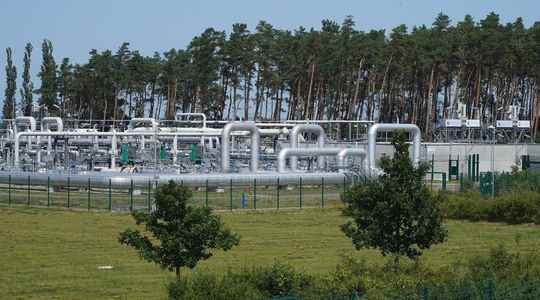Cut off from the Nord Stream network which was supposed to transport Russian gas to Germany, Berlin is looking at all costs for a solution to get supplies again. The country led by Olaf Scholz is turning towards southern Europe and its historical partners. With his Spanish and Portuguese counterparts, he dreams of building a huge gas pipeline through France.
The German Chancellor had regretted, Thursday, August 11, the absence of “interconnection between the Iberian Peninsula and Central Europe, passing through France, which would contribute “to relieve and relax the supply situation” of gas. Portuguese Prime Minister Antonio Costa welcomed the prospect, assuring that “Portugal can play an important role” in helping to make Europe “energy self-sufficient”. This project “is something that the Spanish government has been demanding and asking Europe for a long time already”, insisted the Spanish Prime Minister, Pedro Sánchez. But France, whose endorsement could lead to the rapid commissioning of the system, shares less the enthusiasm of its partners .
What would it be used for?
The challenge of such a project is to respond to the urgency of the energy crisis. The development would increase capacity by 2% this year and 3% next year, according to the firm S&P Global requested by The gallery. Madrid and Lisbon intend to take advantage of their geographical positions since the two capitals have port infrastructures allowing them to receive liquefied natural gas (LNG) transported by ship from all over the world. The pipes would ensure the redistribution. A boon as Europe, hit by the war in Ukraine, is in the grip of a serious energy crisis which threatens a number of member countries with ruptures in supply chains and shortages in winter.
Where could he go?
To imagine where the pipeline could be located, we must delve into the declarations of the Spanish Minister for Ecological Transition, Teresa Ribera, who affirms that Spain is “ready” to make the gas pipeline operational within a year. The Spanish plan is to pass “through the Pyrenees”. The Spanish government and its private partner, Enagás, associated with the reflection, intend to rely on a project that was aborted a few years ago.
A gas pipeline between Catalonia and the south-east of France, called MidCat (Midi-Catalogne), was launched by the authorities of the two countries in 2013. It was finally abandoned for lack of agreement on its financing and real support. from France. According to Spain, it would suffice to connect 100 kilometers to the networks already in place in order to set up this major European project. Once the gas has been transported to France, it could be transported to central Europe.
But the project is contested by France and by several experts. Many voices are raised to favor the construction of LNG terminals throughout Europe rather than building huge pipes that will flood the continent with Iberian gas. Only Spain and Portugal would emerge victorious from such an imbalance of resources. Above all, there is real skepticism about the overall ability to generate LNG to supplant demand. Global LNG demand is expected to reach 436 million tonnes in 2022, available supply was not expected to exceed 410 million tonnes, according to analyst firm Rystad Energy from The gallery.
Do gas pipelines already exist today?
France already has two gas interconnections in operation with the localities of Birriatou and Larrau, in Spain. Its supply capacity is 8 billion cubic meters per year, very far from the 55 provided by Nord Stream. The regasification terminal at Fos-sur-Mer (Bouches-du-Rhône), commissioned in 2010, also enables France to import large quantities of LNG. An LNG gas pipeline to Le Havre, in Normandy, is also under study. The presence of all these infrastructures does not contribute to France’s favorable position regarding the construction of a new gas pipeline.
Why is France not convinced?
The interest in participating in the project is meager for France. Being crossed by an aqueduct means heavy maintenance, the costs of which will have to be borne by the taxpayer. The note was estimated at three billion euros when the MidCat project was abandoned. Above all, France intends to rely on its already existing infrastructures to deal with the energy crisis. As part of a coordinated response from the European Union, it is more in favor of investing in LNG production.
France is also skeptical about the ecological footprint of the gas pipeline. When the energy crisis is over, Bercy fears that the construction of the pipeline would lead to the long-term consumption of fossil fuels. The Germans say no. The government of Olaf Scholz is convinced of the rehabilitation of pipelines to import hydrogen. The German ambition, in the long term, is to use a vast decarbonated hydrogen transport network across Europe, via the European Hydrogen Backbone project, to which the gas pipeline would be attached.
